Today’s SUN (20231125) | 4 lights
https://solarchatforum.com/viewtopic.php?t=43271
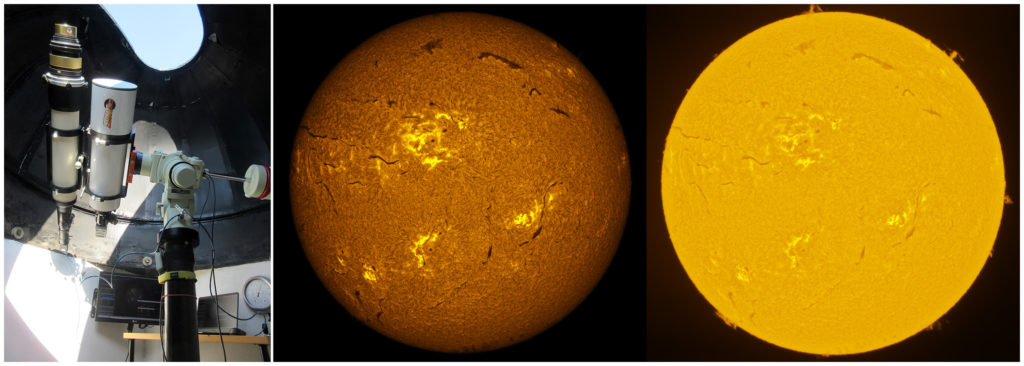
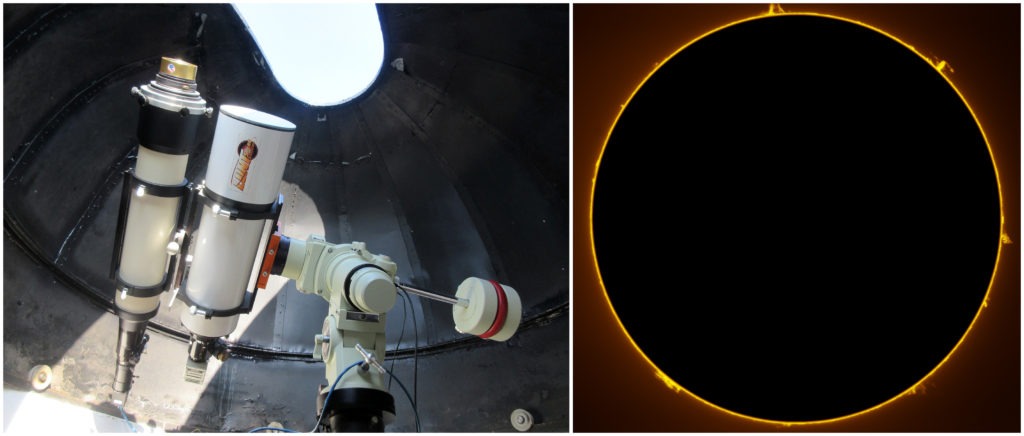
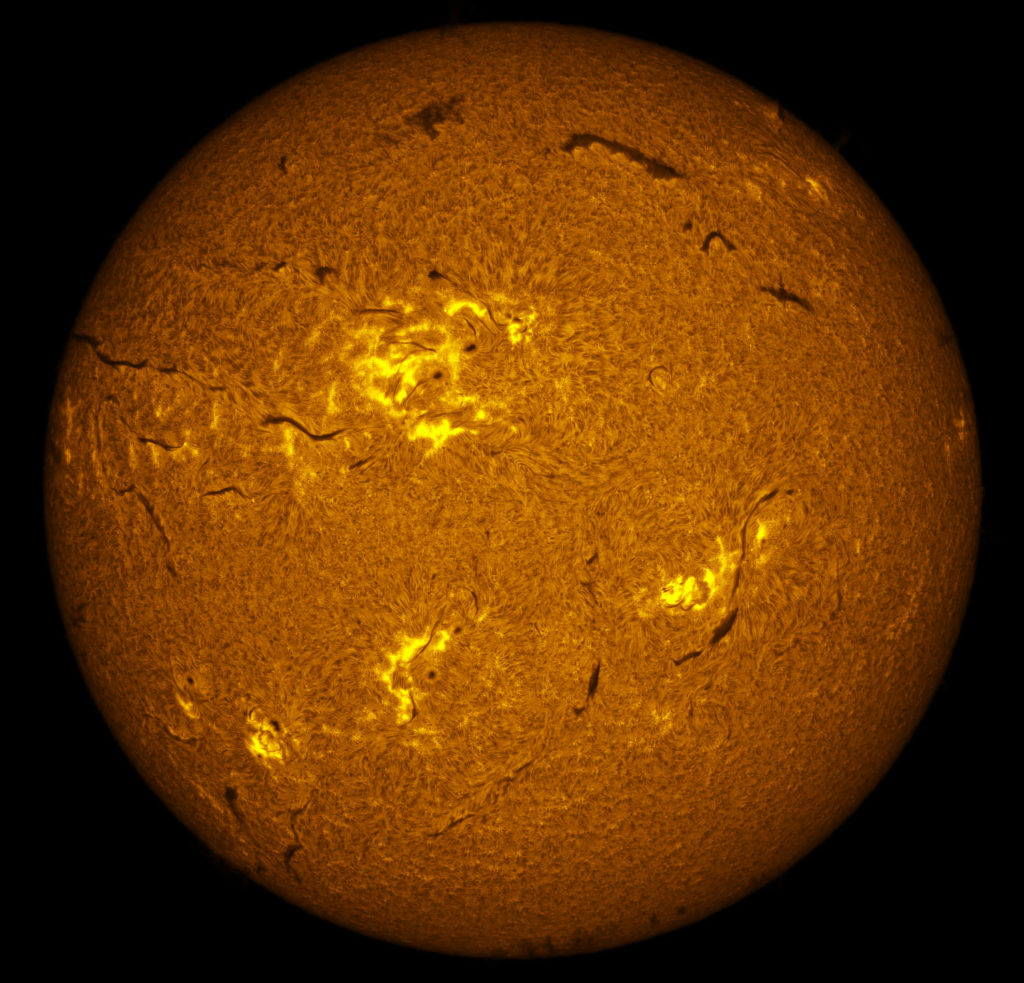


Seestar S50 | Solar imaging (20231124) | Pedro RE’
https://pedroreastrophotography.com/
Mais em:
https://pedroreastrophotography.com/seestar_s50.html
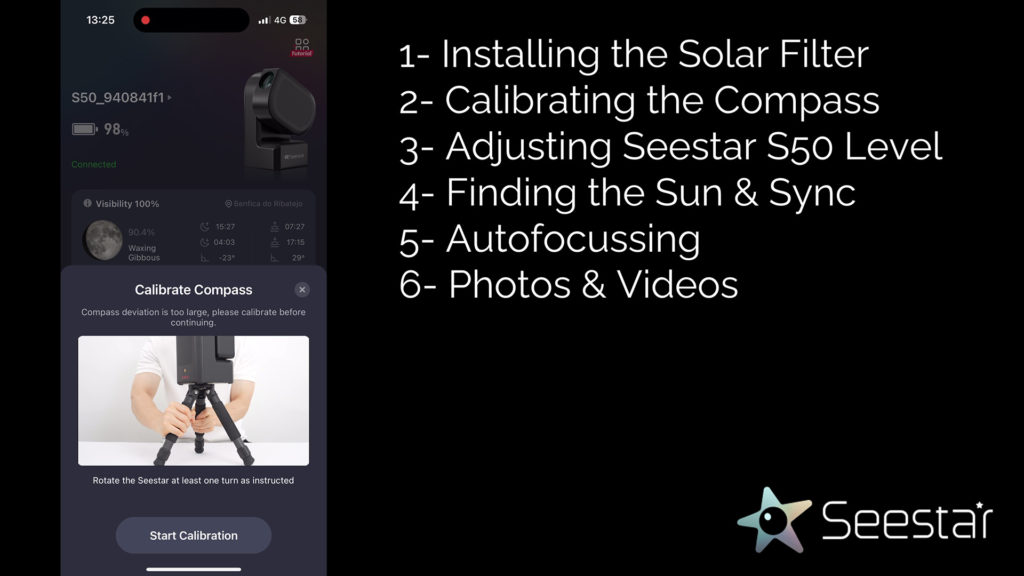
https://youtu.be/4LA2Mdn6QtQ
Seestar S50 | Solar imaging | Pedro RE’
Pedro RE’ (20231118)
https://pedroreastrophotography.com/
https://youtu.be/CVQwySaYqB0
Seestar S50 | First Light (20231118) | Pedro RE’
https://pedroreastrophotography.com/
https://youtu.be/EfDVvdMLh1E
Seestar S50 | Solar imaging (20231119) | Pedro RE’
https://pedroreastrophotography.com/
https://youtu.be/tstPFcVlvlk
Seestar S50 | M42/B33 (20231122/23) | MOON 77% | Pedro RE’
https://pedroreastrophotography.com/
https://youtu.be/hD41dEK5-Cc
Seestar S50 | Lunar imaging (20231122/23) ! Pedro RE’
https://pedroreastrophotography.com/
https://youtu.be/ilGCy1I31F4
Seestar S50 | Solar imaging (20231123) | Pedro RE’
https://pedroreastrophotography.com/
Sol’Ex Spectroheliograph | Baader 10×60 Vario Finder | ASI178MM
https://solarchatforum.com/viewtopic.php?t=43226
https://youtu.be/GbQ6XxW6qwI
Solar imaging session (20231118) | Pedro RE’
Sol’Ex Spectroheliograph | Baader 10×60 Vario Finder | ASI178MM
https://pedroreastrophotography.com/
DIGITAL IMAGE PROCESSING TUTORIALS | Pedro RE’
GraXpert – A fast and easy way to remove gradients
Now integrated in PixInsigth
https://pedroreastrophotography.com/
GraXpert is designed to remove gradients from astroimages. Gradients are gradual changes in brightness that are not part of the astrophoto but are caused by external interference.
Some causes can be light pollution, incorrect or missing flat correction, natural brightness gradients of the night sky, or peculiarities of the optics used (such as shading in the form of a vignette).
Color casts can also be removed, and it generally makes sense to reduce the amount of the sky background in the astrophoto. In short: A gradient removal is very useful, if not mandatory.
GraXpert is a freely available open-source software that was programmed exclusively for this purpose. It works as a stand-alone program, and now it is integrated in PixInsigth.
https://youtu.be/ayhBKprJljU
Solar imaging session (20231114) | Pedro RE’
Sol’Ex Spectroheliograph | FS60C F/5.9
https://pedroreastrophotography.com/
https://youtu.be/G9BUp5lcsrI
Solar imaging session (20231114) | Pedro RE’
TV NP127 F/5.2 | 4 lights
https://pedroreastrophotography.com/
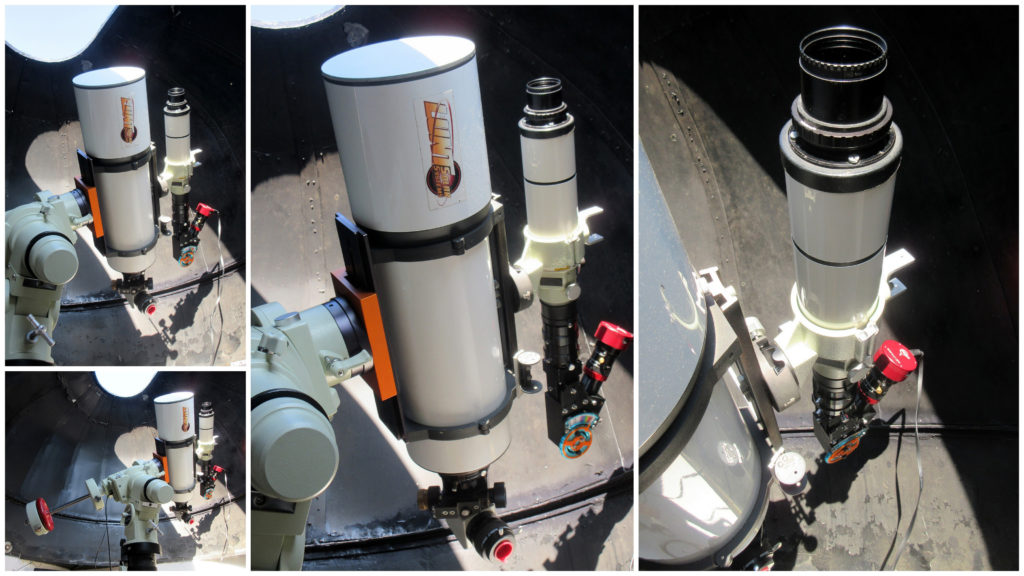
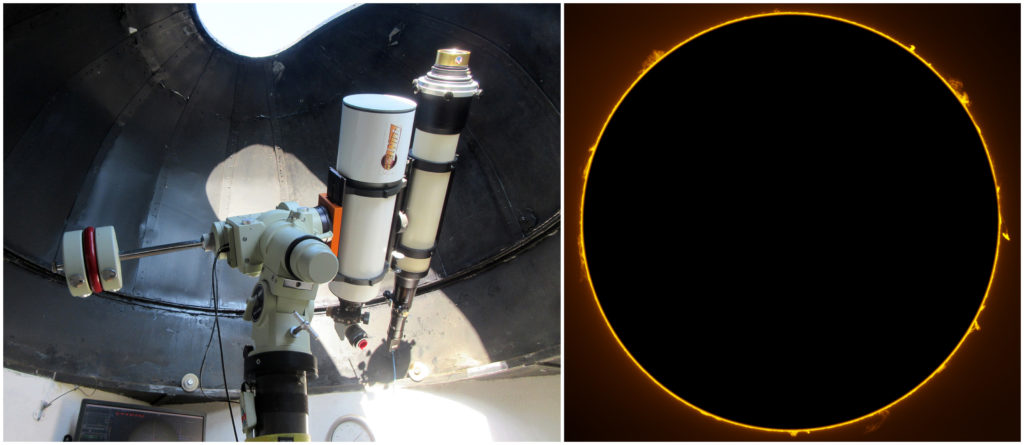
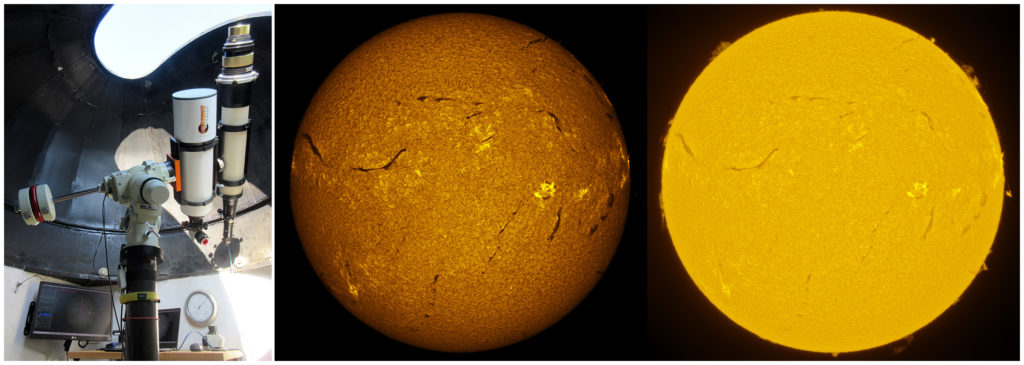

Utilizando a informação do nosso associado Rui Gonçalves e outra que eu próprio recolhi, informo-vos de duas ocultações muito interessantes que vão ocorrer em breve.
A primeira, bem desafiante, na madrugada do dia 21 Novembro a ocultação (occ) de uma estrela de magnitude 11.8 por uma das luas de Úrano – Titania.
Titania estará a magnitude 13.8 e ocultará a estrela durante ~72 s (na zona central de occ). A queda de magnitude será da ordem de 2.2 mag. O Titania estará a cerca de 30″ do brilhante planeta Úrano.
De recordar que há 22 anos (em 2001) realizamos um excelente trabalho no registo de outra occ por este Titania, cerca de ¼ das occ positivas foi nacional.
https://ui.adsabs.harvard.edu/abs/2009Icar..199..458W/abstract
Desta vez o evento ocorre mais baixo, a 17º alt a Oeste, no continente, mais elevado nos Açores, e com uma estrela mais fraca.
A Segunda ocorrerá a 12 de Dezembro e é a ocultação da estrela Betelgeuse pela asteroide Leona.
319 Leona é um asteroide com longo período de rotação (430h), da região periférica da cintura de asteroides, com diâmetro estimado entre os 50 e os 61km. Foi descoberto a 8 de outubro de 1891 pelo astrónomo francês Auguste Charlois.
Órbita do asteroide 319 Leona
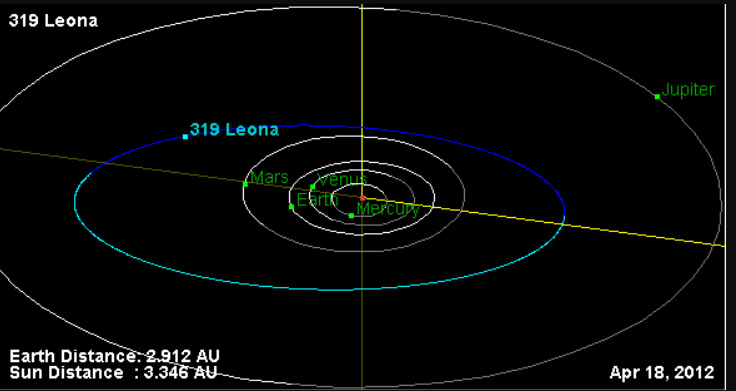
Faixa de visibilidade da ocultação
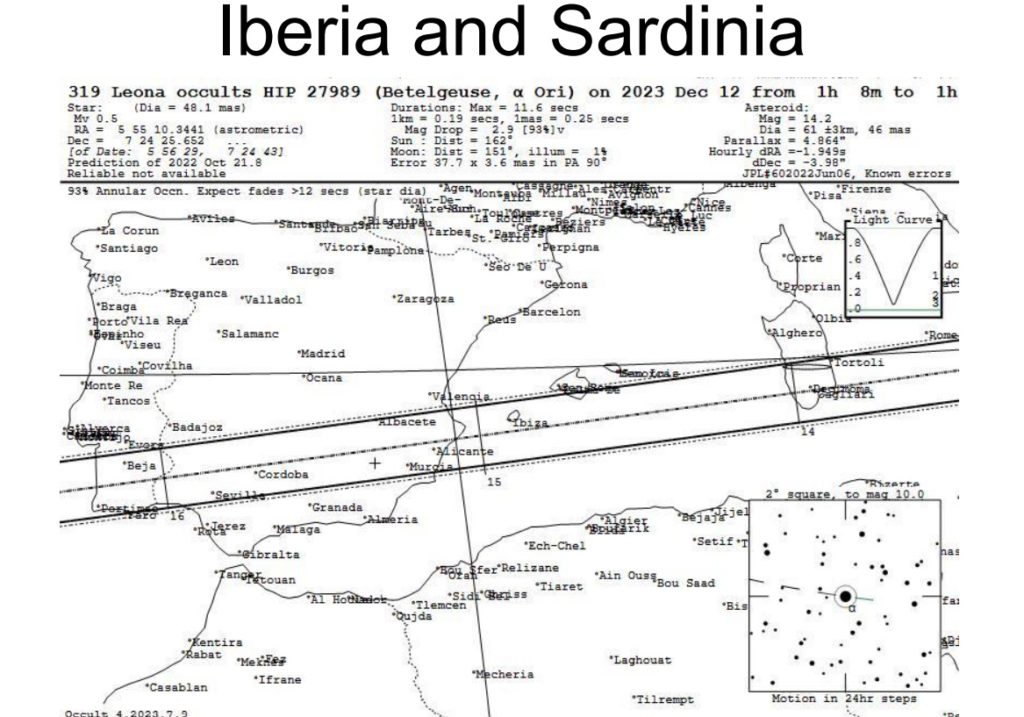
A faixa de visibilidade da ocultação, localizada no nosso país, ocorre a sul de Portugal continental.
Mais informação no link que vos envio abaixo:
https://occultations.org/publications/rasc/2023/2023Dec12Leona.pdf
Noites estreladas
Rui Lourenço
Secretário